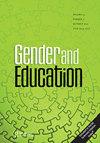Student violence towards teaching assistants in UK schools: a case of gender-based violence
IF 1.9
3区 教育学
Q2 EDUCATION & EDUCATIONAL RESEARCH
引用次数: 1
Abstract
ABSTRACT In recent years significant research attention has focused on the problem of student violence in schools and, to a lesser extent, on its relationship to gender-based violence. However, student violence towards teaching assistants has not been studied, despite evidence suggesting that teaching assistants are at significantly more risk from student violence than other staff members. In this article, we draw on data from 16 in-depth interviews with teaching assistants who have experienced student violence. We conclude that violence towards teaching assistants is ignored, in both research and in schools, precisely because of the feminized and under-valued nature of the role, and argue that the continual victimization of teaching assistants diminishes their status further. We highlight its parallels with gender-based violence and argue that applying such a framework is key to recognizing the personal and social harms that this violence causes and the organizational responses that leaves teaching assistants particularly vulnerable.英国学校对助教的学生暴力:一个基于性别的暴力案例
摘要近年来,学校中的学生暴力问题引起了大量的研究关注,而在较小程度上,它与基于性别的暴力的关系也引起了人们的关注。然而,尽管有证据表明助教比其他工作人员面临更大的学生暴力风险,但学生对助教的暴力行为尚未得到研究。在这篇文章中,我们利用了16次对经历过学生暴力的助教的深入采访的数据。我们得出的结论是,在研究和学校中,对助教的暴力行为都被忽视了,正是因为这个角色的女性化和被低估的性质,并认为助教的持续受害进一步削弱了他们的地位。我们强调了它与基于性别的暴力的相似之处,并认为应用这样一个框架是认识到这种暴力造成的个人和社会伤害以及使助教特别脆弱的组织反应的关键。
本文章由计算机程序翻译,如有差异,请以英文原文为准。
求助全文
约1分钟内获得全文
求助全文
来源期刊

Gender and Education
EDUCATION & EDUCATIONAL RESEARCH-
CiteScore
5.20
自引率
9.10%
发文量
31
期刊介绍:
Gender and Education grew out of feminist politics and a social justice agenda and is committed to developing multi-disciplinary and critical discussions of gender and education. The journal is particularly interested in the place of gender in relation to other key differences and seeks to further feminist knowledge, philosophies, theory, action and debate. The Editors are actively committed to making the journal an interactive platform that includes global perspectives on education, gender and culture. Submissions to the journal should examine and theorize the interrelated experiences of gendered subjects including women, girls, men, boys, and gender-diverse individuals. Papers should consider how gender shapes and is shaped by other social, cultural, discursive, affective and material dimensions of difference. Gender and Education expects articles to engage in feminist debate, to draw upon a range of theoretical frameworks and to go beyond simple descriptions. Education is interpreted in a broad sense to cover both formal and informal aspects, including pre-school, primary, and secondary education; families and youth cultures inside and outside schools; adult, community, further and higher education; vocational education and training; media education; and parental education.
 求助内容:
求助内容: 应助结果提醒方式:
应助结果提醒方式:


